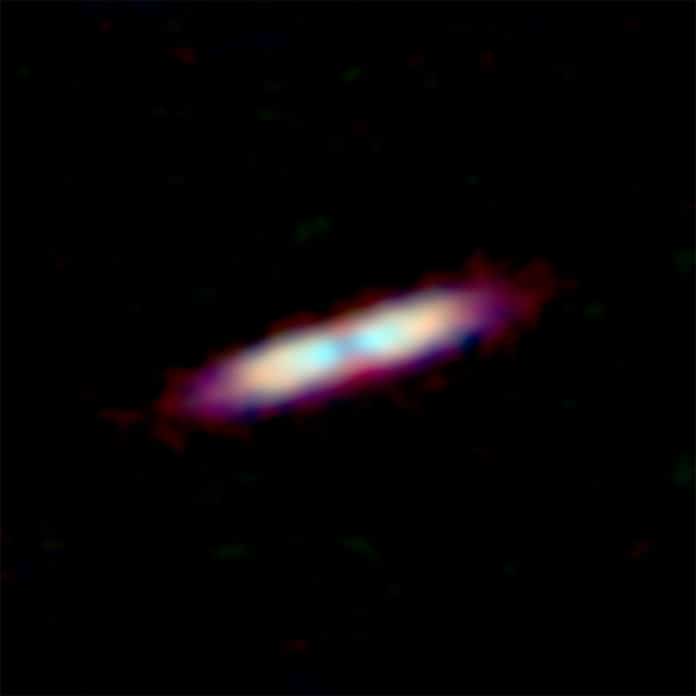Astronomers have discovered a young star called 49 Ceti- surrounded by an astonishing mass of gas. The actual age of this star is 40 million years old.
As per the theories, stars at this age must lose all of its gas, but this discovery challenge those findings and requests reconsideration of our current understanding of planet formation.
The discovery is made using the Atacama Large Millimeter/submillimeter Array (ALMA).
Aya Higuchi, an astronomer at the National Astronomical Observatory of Japan (NAOJ), said, “We found atomic carbon gas in the debris disk around 49 Ceti by using more than 100 hours of observations on the ASTE telescope. As a natural extension, we used ALMA to obtain a more detailed view, and that gave us the second surprise. The carbon gas around 49 Ceti turned out to be ten times more abundant than our previous estimation.”
The amount of carbon atoms is so large that the team even detected faint radio waves from a rarer form of carbon, 13C. This is the first detection of the 13C emission at 492 GHz in any astronomical object, which is usually hidden behind the emission of regular 12C.
Higuchi said, “The amount of 13C is only 1% of 12C. Therefore the detection of 13C in the debris disk was unexpected. It is clear evidence that 49 Ceti has a surprisingly large amount of gas.”
While searching for the origin of this gas, scientists came up with two possibilities:
- It is remnant gas that survived the dissipation process in the final phase of planet formation. The amount of gas around 49 Ceti is, however, comparable to those around much younger stars in the active planet formation phase. There are no theoretical models to explain how so much gas could have persisted for so long.
- The gas was released by the collisions of small bodies like comets. But the number of collisions needed to explain a large amount of gas around 49 Ceti is too large to be accommodated in current theories. The present ALMA results prompt a reconsideration of the planet formation models.
References:
- First Subarcsecond Submillimeter-wave [C I] Image of 49 Ceti with ALMA
- First Detection of Submillimeter-wave [13C I] 3P1–3P0 Emission in a Gaseous Debris Disk of 49 Ceti with ALMA
